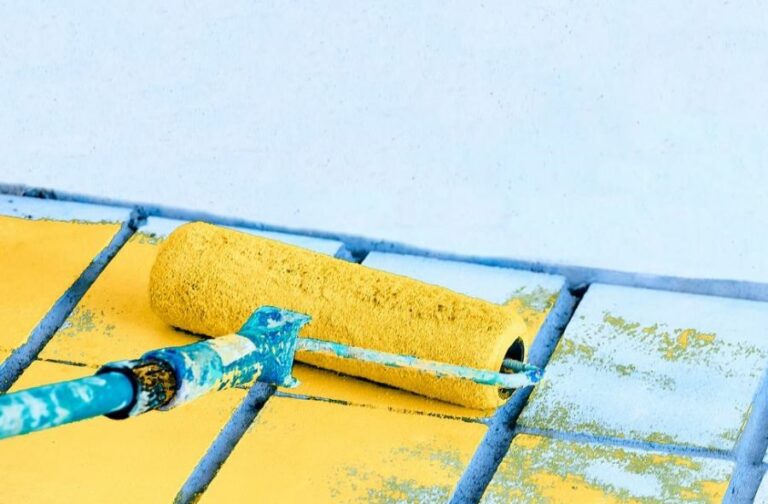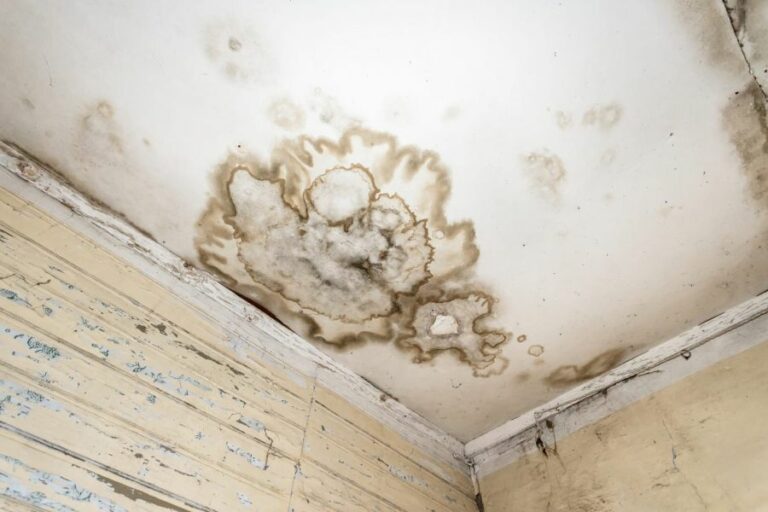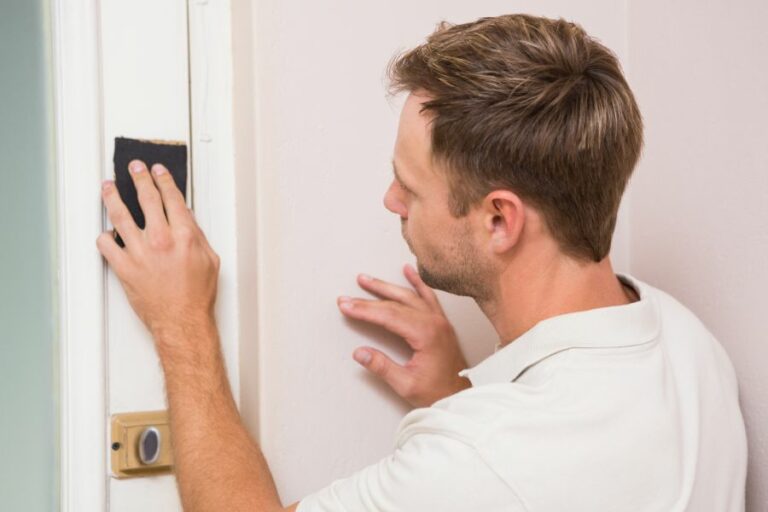Powerful Paint Strippers For Clean Surfaces. What Pros Say
When it comes to giving surfaces a fresh start, selecting the right paint stripper is crucial. Fortunately, we have gathered all the information needed to help you choose the most powerful and efficient paint strippers available in the market. Rest assured; these top-notch products will provide impeccably clean surfaces without causing harm to the environment, allowing for a smooth and successful painting experience.
Powerful paint strippers for clean surfaces:>
Powerful paint strippers for clean surfaces include chemical options like solvent-based, bio-based, and caustic paint strippers and mechanical methods such as manual scraping, sanding, and power sanders. All provide effective paint removal, but their suitability depends on the surface material and project requirements. Always prioritize safety and ventilation when using paint strippers.

Discover the top-performing paint strippers that will leave your surfaces clean and mess-free in no time. Let us help you choose the best product for your needs and guide you through the application process. Read on to learn more about these powerful paint removal solutions!
Contents
- 1 High-Potency Paint Removers for Immaculate Surfaces
- 2 Uncovering the Most Potent Paint Dissolvers
- 3 How to Remove Residual Debris Post-Paint Stripping
- 4 Professional Techniques for Expert Paint Stripping
- 5 Most Efficient Methods for Paint Removal Success
High-Potency Paint Removers for Immaculate Surfaces
Paint strippers are essential tools for any professional or DIY enthusiast looking to restore or revamp surfaces with old or worn-out paint. They come in various formulations and strengths, making it challenging to determine the most suitable option for your project.
• Chemical Paint Strippers: Potent and Time-Saving
One of the most popular types of paint strippers is chemical paint strippers. These powerful solutions are designed to break down and dissolve paint, making it easy to remove with minimal scraping or sanding. Chemical paint strippers can be divided into three main categories:
– Solvent-Based Paint Strippers
Solvent-based paint strippers use highly effective chemicals to remove paint, varnish, and other coatings from surfaces. These work best for metal, wood, glass, and other non-porous materials.
While extremely effective, solvent-based paint strippers emit strong fumes, requiring proper ventilation and protective gear during use.
Recommended Product: Crown STRP Paint & Varnish Remover goes a long way with its potent formulation, quickly removing multiple layers of paint within a short time. However, always prioritize safety when working with this stripper, as it contains harsh chemicals.
– Bio-Based Paint Strippers
For those looking for eco-friendly options, bio-based paint strippers are a viable choice, made from sustainable and renewable resources. Besides being environmentally friendly, these strippers also have a relatively mild odor, making them safer for indoor use.
Recommended Product: Soy Gel Paint Remover is an effective and safe option for removing paint from a variety of surfaces. Made from soybean oil and natural ingredients, it is an excellent alternative to solvent-based strippers.
– Caustic Paint Strippers
Caustic paint strippers contain sodium hydroxide or potassium hydroxide, which reacts with the paint layers and transforms them into a removable substance.
These strippers work well on masonry, concrete, and other alkaline surfaces. They should not be used on wood or other acid-sensitive materials, as they might cause discoloration or damage.
Recommended Product: Peel Away offers a wide range of caustic paint strippers based on the specific requirements of your project. Always ensure you select an appropriate product for your particular material and read the instructions thoroughly.
• Mechanical Paint Removal: Precision and Control
For those who prefer a more hands-on approach, mechanical paint removal methods offer greater control and precision. These methods use tools and equipment to physically remove paint layers from surfaces without relying on chemicals.
– Manual Scraping and Sanding
Using hand tools, such as scrapers and sandpaper, is an affordable and effective method to remove paint from small areas or detailed projects. This method requires more time and effort compared to chemical strippers but provides excellent control over the process.
Recommended Tools: Invest in a good-quality scraper, such as the Bahco Ergo Carbide Scraper, for efficient paint removal. Pair this with a variety of sandpaper grits to achieve a smooth finish.
– Power Sanders
Power sanders are efficient tools for removing paint from larger surfaces or when the old paint is difficult to remove manually. Orbital and belt sanders are popular options but should be used carefully to avoid damaging the surface.
Recommended Product: The DeWalt DWE6423K Random Orbit Sander is a powerful and easy-to-use power sander that efficiently removes paint and other coatings.
• Safety Precautions When Using Paint Strippers
Whether using chemical or mechanical paint strippers, safety should always be your main priority. Here are a few essential tips to help ensure a safe and successful paint removal project:
- Wear appropriate protective gear, such as gloves, goggles, and a respirator, particularly when working with chemical paint strippers.
- Cover and mask any sensitive areas of the surface to avoid accidental damage or chemical exposure.
- Work in a well-ventilated area when using chemical paint strippers.
- Dispose of waste materials according to local regulations and guidelines.
- For lead-based paint removal, follow the guidelines provided by the United States Environmental Protection Agency to minimize the risk of exposure.
In conclusion, an understanding of the various types of paint strippers and their applications is essential when undertaking a surface restoration project.
Whether you choose chemical paint strippers, such as solvent-based, bio-based, or caustic paint strippers, or opt for mechanical paint removal methods like manual scraping and sanding or using power sanders, always prioritize safety and follow recommended guidelines to achieve clean surfaces efficiently and effectively.
Uncovering the Most Potent Paint Dissolvers
Paint removal can be a tough and time-consuming task, but with the right paint remover, it can be easier. There are various types of paint removers available in the market, and the strongest paint remover would depend on the type of paint you are trying to strip and the surface you are working with.
• Chemical Paint Removers: A Powerful Solution for Tough Jobs
One of the most common types of paint removers is chemical paint removers. These products use chemicals to break down and dissolve the paint, making it easy to remove from the surface. Among chemical paint removers, the most powerful type is solvent-based removers.
– Methylene Chloride: A Highly Effective but Potentially Dangerous Paint Remover
Methylene chloride, also known as dichloromethane, is one of the most effective chemical paint removers. It penetrates the paint layers and breaks them down quickly, making it one of the strongest paint removers available.
However, methylene chloride is known to be toxic and can pose health risks according to the United States Environmental Protection Agency (EPA). It is vital to use proper precautions and follow safety guidelines when using products containing methylene chloride.
– N-Methyl-2-pyrrolidone (NMP): A Safer Alternative to Methylene Chloride
N-Methyl-2-pyrrolidone (NMP) is another powerful chemical paint remover that is considered a safer alternative to methylene chloride. NMP-based paint removers are less toxic and have a lower risk of causing health problems.
However, they may still require appropriate safety measures, such as wearing gloves and proper ventilation. One downside of NMP-based paint removers is that they can take longer to work than those containing methylene chloride.
– Caustic Paint Removers: Effective on Oil-based Paints but with Some Limitations
Caustic paint removers, such as sodium hydroxide (lye) and potassium hydroxide, are alkaline chemicals that work well for removing oil-based paints. They are not as effective with water-based or latex paints, however.
Additionally, caustic paint removers can cause damage to some surfaces, such as wood, and may require neutralization after use to avoid lasting harm.
• Bio-Based Paint Removers: Environmentally Friendly Options with Impressive Strength
As an alternative to chemical paint removers, bio-based paint removers have gained popularity in recent years. These products use natural ingredients, such as soy, orange, and other plant-based materials, to strip paint effectively.
Although they may not be as fast-acting as some chemical paint removers, bio-based paint removers offer several benefits:
- Highly effective on various paint types, including oil-based, water-based, and latex paints
- Safer for the environment
- Lower risk of health issues when used correctly
- No harsh fumes or odors
- Less likely to damage surfaces
While the effectiveness of these paint removers might vary, some products have proven to be just as strong as chemical paint removers.
• Mechanical Paint Removal: A Different Approach
In addition to chemical and bio-based products, another method of paint removal is mechanical paint removal. This approach involves using tools such as paint scrapers, wire brushes, and sandpaper to remove paint without the use of chemicals.
For some surfaces, such as metal or masonry, this method could be the strongest and most effective option. However, for delicate surfaces like wood, mechanical paint removal methods might cause damage and should be used cautiously or avoided altogether.
• Choosing the Strongest Paint Remover for Your Needs
When it comes to finding the strongest paint remover, it is crucial to consider the type of paint and surface you are working with, as well as your personal preferences and safety needs.
In some cases, a chemical paint remover, such as methylene chloride or NMP, might be the strongest option. For other situations, bio-based paint removers or mechanical paint removal methods might be more effective and suitable.
In closing, the strongest paint remover is the one that safely and effectively accomplishes your paint-stripping goals with minimal harm to both the surface and the user.
No matter which product or method you choose, always be sure to follow all safety guidelines and manufacturer’s instructions to achieve the best results.
How to Remove Residual Debris Post-Paint Stripping
When working with paint, whether you’re removing old layers or applying new ones, it’s crucial to ensure the surface is clean and residue-free.
• Solvents for Cleansing Surfaces
– Mineral Spirits
Mineral spirits are widely recommended for their ability to remove residue after stripping paint. They are petroleum-based solvents that effectively dissolve grease, oil, and grime, making them suitable for cleaning various surfaces, including wood and metal.
To use mineral spirits, dampen a clean, lint-free cloth with the solvent and rigorously rub the surface until the remaining residue is removed. It is advised to use gloves and work in a well-ventilated area when handling mineral spirits, as they emit strong fumes.
– Denatured Alcohol
Denatured alcohol is another effective solvent for removing residue after stripping paint. It is a mixture of ethanol and other chemicals, which makes it unfit for consumption but excellent for cleaning purposes.
Similar to mineral spirits, you can use a cloth dampened with denatured alcohol to rub the surface until the residue is dissolved. Since it evaporates quickly and leaves little odor behind, denatured alcohol is a popular choice for many paint-related projects.
Please exercise caution, as denatured alcohol is highly flammable.
• Abrasive Methods to Remove Residue
– Sanding
Sanding is a standard method to remove residue after stripping paint, particularly when dealing with wooden surfaces. It effectively smoothens the surface and prepares it for new paint or finish. You can use sandpaper manually or attach it to an orbital sander for easier application.
Start with a coarse-grit sandpaper, such as 80 or 100 grit, to remove the bulk of the residue, and progressively use finer grits (e.g., 150, 220) to achieve a smooth surface. Remember to wear protective gear, such as goggles and a dust mask, to protect yourself from debris and airborne particles during sanding.
– Steel Wool
Steel wool can be an excellent alternative to sandpaper for removing paint residue from metal surfaces. It is available in different grades, such as 0000 (finest) to 4 (coarsest), to suit various applications. Use a grade appropriate for the task, and lightly scrub the surface until the residue is removed.
Always wear gloves when working with steel wool to prevent injury from the metal fibers.
• Specialized Tools and Products for Residue Removal
– Paint Removers
For complete residue removal, you can use specialized paint removers. These products are formulated to dissolve the paint and can be applied with a brush or cloth. Many paint removers are biodegradable and eco-friendly, ensuring that they don’t damage the underlying surface.
Follow the manufacturer’s instructions on the application and waiting times, and be sure to heed any safety precautions. You may need to repeat the process multiple times for better results.
After using a paint remover, it is essential to neutralize the surface according to the product recommendations before applying new paint or finish.
– Scrapers
A paint scraper can be a useful tool for removing residue in combination with other methods, such as solvents or sanding. Select a scraper appropriate to the surface material to prevent any damage. Hold the scraper at an angle and carefully scrape away the residue.
– Pressure Washers
Pressure washers can effectively remove paint residue from outdoor surfaces, such as brick, concrete, or wood. High-pressure water jets dislodge the residue, allowing it to be washed away easily.
Using a pressure washer with suitable settings for your project is crucial since excessively high pressure can damage the underlying surface.
In conclusion, there are several methods and tools to remove residue after stripping paint. Each has its advantages and drawbacks, depending on the surface material, amount of residue, and desired finish.
Determine the most suitable method for your project, test it on a small, inconspicuous area, and follow safety guidelines while working.
Professional Techniques for Expert Paint Stripping
Paint stripping is a process required in various industries, from automotive to home improvement projects. Professionals use different techniques and tools depending on the type of surface, the type of paint being removed, and the desired end result.
• Chemical Paint Strippers
Chemical strippers are among the most effective and popular methods used by professionals for removing paint from surfaces such as metal, wood, and plastic. These chemical solutions come in various forms, including liquids, gels, and aerosols, and are applied directly to the painted surface.
– Solvent-Based Strippers
Solvent-based paint strippers use strong chemicals to dissolve and lift paint from the surface. The active ingredients in these strippers include dichloromethane, also known as methylene chloride, and N-Methyl-2-pyrrolidone (NMP).
These chemicals can be dangerous to work with, so professionals always take proper safety precautions like wearing protective gloves, goggles, and respirators.
After applying the stripper, pros let it sit for a specified amount of time before removing it using a scraper or a nylon scrubbing pad, taking the paint with it.
The Environmental Protection Agency (EPA) has set restrictions on the use of methylene chloride in paint removal products due to health risks and environmental concerns. You can read more about these regulations here.
– Bio-Based Strippers
As an alternative to solvent-based strippers, some professionals use bio-based paint strippers made from natural materials like soy, corn, or citrus products. These more eco-friendly options usually contain lower levels of volatile organic compounds (VOCs) and are less toxic than traditional solvent strippers.
However, they may require more time to remove the paint compared to their solvent-based counterparts effectively.
• Mechanical Paint Stripping
Mechanical paint removal involves using abrasive materials or tools to physically remove paint from surfaces. These methods offer the advantage of being less reliant on chemicals and may be faster when working on large surfaces or when dealing with thick paint layers.
– Sanding
Sanding is a common method used to strip paint from wood, metal, drywall, and other surfaces. Professionals use both manual sanding tools, such as sandpaper and sanding blocks, and power tools, like orbital sanders, belt sanders, or detail sanders.
The appropriate type of sandpaper, grit size, and sanding tool depends on the specific requirements of the project.
– Scraping
For uneven surfaces or areas with intricate details, professionals may use a paint scraper or putty knife to remove the paint. This technique requires some skill and attention to prevent gouging the surface, so it’s important to use the appropriate scraper and angle when working.
– Media Blasting
Media blasting, such as sandblasting, soda blasting, or bead blasting, is a controlled process that uses a pressurized stream of abrasive media to strip paint and other coatings from a surface.
This method is particularly useful for removing paint from metal surfaces, such as automotive parts, and it can be faster and more efficient than sanding or chemical paint removal in certain situations.
Professionals use specialized equipment like blast cabinets and wear appropriate safety gear when performing media blasting.
• Heat-Based Paint Stripping
Heat-based paint removal methods work by softening the paint and loosening its bond with the surface. This makes it easier to scrape or peel the paint away.
– Infrared Paint Removers
Infrared paint removers use heat from infrared lamps to soften the paint, making it easier to scrape off. This method is particularly effective on wood surfaces, as it doesn’t damage the wood beneath the paint.
Professionals must be cautious when using infrared heat to strip paint, as the heat can also soften adhesives, caulk, and other materials on the surface.
– Electric Heat Guns
Heat guns are another popular method for removing paint, especially from wood surfaces. They emit hot air, typically between 500 and 1,000 degrees Fahrenheit, to soften the paint.
Professionals must use caution when operating heat guns to avoid overheating the surface or causing the paint to release toxic fumes.
• Conclusion
There are several professional paint stripping methods, each suited to different types of surfaces and requirements. Chemical strippers, mechanical methods like sanding and media blasting, and heat-based methods such as infrared paint removers or heat guns all have their place in the professional’s toolbox.
The most important aspect of paint removal is to use the appropriate technique and follow proper safety precautions, ensuring a successful and safe paint stripping experience.
Most Efficient Methods for Paint Removal Success
When it comes to paint removal, there are various methods you can choose from depending on the type of paint, the surface it’s on, and your desired results.
• Mechanical Methods
– Sanding
Sanding is an effective method for removing paint from wood, metal, and other surfaces. For small areas, manual sanding with sandpaper or a sanding block can provide the desired results.
When working with larger surfaces, an electric sander is a more efficient option. For curved surfaces and detailed work, you may want to consider using a rotary tool with a sanding accessory.
Bear in mind that sanding can create a lot of dust, so it’s crucial to wear proper protective gear, such as a dust mask and goggles. When sanding, always start with coarser grit sandpaper and move to finer grits as the paint is removed.
– Scraping
A paint scraper is another useful tool for removing paint. The scraper’s flat blade can be easily slid under the paint layer and effectively lift it away from the surface. There are various types of scrapers available that cater to different surfaces and paint conditions.
A sharp scraper will yield better results, so it’s essential to maintain the blade’s sharpness throughout the process.
When using a scraper, apply even pressure to avoid gouging the surface beneath the paint. To improve efficiency, follow up the scraping process with sanding to ensure a smooth and uniform finish.
Wire Brush
A wire brush can be a convenient tool for removing loose, flaking paint from surfaces such as wood, concrete, or metal. This method works best on rough surfaces that can withstand the abrasive action of the wire bristles. Be sure to use a wire brush with stiff bristles for optimal results.
– Power Tools
Electric paint removers, such as paint shavers and rotary tools with a paint removal attachment, can significantly speed up the paint removal process. These power tools are designed to efficiently strip away paint layers with minimal damage to the underlying surface.
Proceed with caution: Whenever using power tools, it’s vital to follow the manufacturer’s instructions and safety guidelines, as well as to wear proper protective gear.
• Chemical Methods
– Paint Strippers
Paint strippers are chemical solutions designed to soften and break down paint layers, allowing for easier removal. There are various types of paint strippers, such as solvent-based, caustic-based, and bio-based.
When selecting a paint stripper, always consider the type of surface and paint you are dealing with. Some strippers may require a longer dwell time, while others may only need a few minutes to take effect.
A word of caution: Chemical strippers can be hazardous, so always follow the instructions provided with the product and wear appropriate safety gear, such as gloves and goggles.
– Paint Removers
Paint removers, also known as paint thinners or solvents, can be used to dissolve paint layers, making them easier to remove. These products should only be used in well-ventilated spaces and with adequate safety gear due to their fumes.
It’s crucial to choose the correct paint remover for the type of paint you’re working with, as the effectiveness of these products can vary depending on the paint’s composition.
• Heat Methods
– Heat Gun
A heat gun can be an efficient method for softening paint layers, allowing them to be scraped away more easily. When using a heat gun, make sure to keep the tool moving to prevent scorching the surface.
Important: Always exercise caution when working with a heat gun, as they can reach very high temperatures that pose a fire risk. Wear heat-resistant gloves and follow the manufacturer’s guidelines for safe usage.
– Steam Stripping
Steam stripping involves using a steam generator, also known as a wallpaper steamer, to heat and soften the paint layers. This method is particularly effective at loosening multiple layers of old, brittle paint. Once the steam has penetrated the paint, use a scraper to remove the softened layers.
Note: While steam stripping is a safer alternative to using a heat gun, always be mindful of the risks posed by hot steam and heated surfaces.
• Professional Recommendations
Before commencing any paint removal project, it’s crucial to assess the type of paint and surface you are working with, as well as the desired end result. This will determine which method, or combination of methods, is most suitable for your needs.







